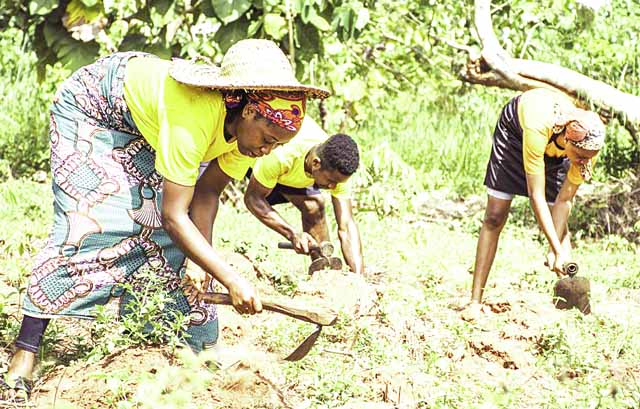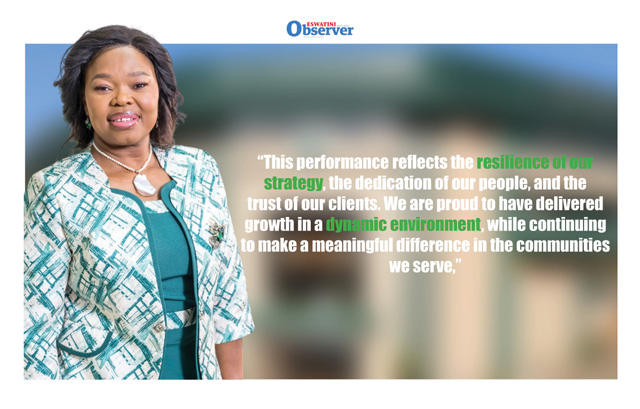By Queen Magagula | 2024-04-06

Eswatini continues to experience high and persistent poverty levels despite the progress it has made over the years.
This was revealed by the World Bank report released on Monday. The report highlighted that Eswatini was a small country with an economy that shared borderlines with South Africa and Mozambique.
Poverty, according to the report, persisted partly because of the lack of quality jobs.
Unemployment in Eswatini was reportedly among the highest in the (SADC) region for over a decade and a large part of the population lives below the poverty line, according to the report, although it was noted that there has been a moderate decline from 63 per cent in 2010 to 58.9 per cent in 2017.
“It is even higher among young people aged between 15 and 24 years, at 59.1 per cent as of 2021. Quality problems in education mean that young people lack the right skills to participate in the labour market. This undermines Eswatini’s potential to benefit from its large and young population,” reads the report.
On a positive note, the report highlighted that poverty calculated using the lower-middle-income country poverty line was projected to decline from 52.1 per cent in 2024 to 51.4 per cent in 2025.
The World Bank Report added that while the projected economic recovery should have a positive impact on households, this improvement would be constrained by the lower agricultural production and structural challenges facing the poor, including low job creation and low access to services.
In addition, the report stated that inequality in consumption per capita and access to public services remained high and Eswatini was among the most unequal countries in the world, with a Gini index of 54.6 in 2016. Disparities in access to basic public services across income groups and geographic locations persist, although access is being expanded.
Factors beyond the control of individuals, including early education, parental education, place of birth and place of residence explained 38.5 per cent of consumption inequality in 2017,” the report states.
The report said Eswatini’s economic prospects for 2024 were favourable partly because of higher Southern African Customs Union (SACU) revenues.
The World Bank said the projected increase in government expenditure would support economic activity and external funding of major capital projects such as the Mkhondvo-Ngwavuma Dam, which would boost both the demand and supply.
“The wholesale and retail, construction and public administration sectors are all expected to benefit from higher public spending. The tourism sector is also expected to continue its recovery and remittances are picking up,” the report further said.
On another hand, the report stated that the current situation of food insecurity in Eswatini was concerning, with a significant portion of the population experiencing high levels of acute food insecurity.
Meanwhile, the World Food Programme report released last year March stated that Eswatini had made progress in economic growth and sustainability since 2010.
However, it is estimated that 29 per cent of the Eswatini population are facing severe acute food insecurity and urgently require humanitarian assistance.
The prevalence of food insecurity and malnutrition remains a pressing concern across the country. Chronic malnutrition and stunting affect 26 per cent of children aged under five years.
“Farming is an important source of food and livelihoods for 70 per cent of rural families.
“However, Eswatini is vulnerable to climate change, with frequent droughts, erratic rainfall and prolonged dry spells, all affecting food production.
Other factors include inadequate farming technologies, low investment in seeds, fertilisers and equipment, and structural barriers preventing access to formal markets. As a result, the country depends on imports to feed its people,” elaborated the report.
The report stated that Eswatini was likely to face a below-average harvest in 2023/24, for both consumption and cash crops, compared to 2022/23. It said approximately 30 per cent of all food produced is lost post-harvest due to poor harvesting, handling, storage and transport infrastructure.
“The Government of Eswatini, with support from the WFP, is taking steps to improve national food and nutrition security.
“This includes safety nets to vulnerable people affected by poverty and HIV/AIDS, particularly pregnant and breastfeeding women and children,” the report further said.
The report added that WFP was actively engaged in providing food assistance and support to Eswatini, addressing the country's high poverty rates, HIV prevalence and food insecurity.
The organisation is working to reach 150 million people in 2024, with a focus on addressing the unique needs of women and girls in the context of the global hunger crisis.
share story
Post Your Comments Below

NEDBANK Eswatini has reported a strong financial performance for the year ended December 31, 2024...

Zee Nxumalo, a multi-platinum singer and songwriter, is set perform at the MTN Bushfire Firefly g...
GOVERNMENT has refuted claims that the taxpayer will foot the bill for security upgrades ...
HARARE - Police deployed heavily in Zimbabwe's capital and other cities on Monday, largely neutra...
All material © Swazi Observer. Material may not be published or reproduced in any form without prior written permission.
Design by Real Image Internet